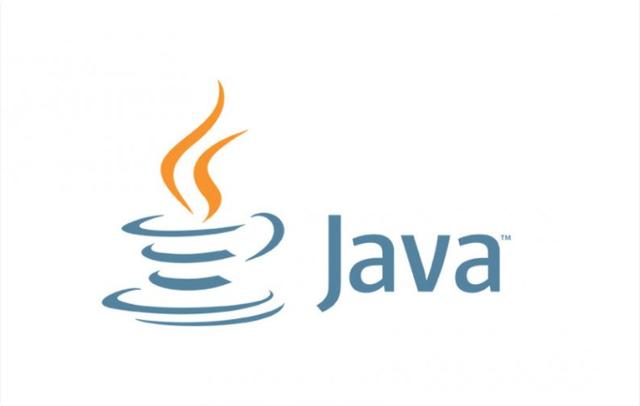在Spring Boot 3中使用享元模式
前言
享元(Flyweight)模式是一种软件设计模式。它使用共享对象可以有效地支持大量细粒度的对象。享元模式尝试重用现有的同类对象,如果未找到匹配的对象,则创建新对象。
Spring框架天然适合使用享元模式,因为Spring本身就充分利用了单例模式的设计。在Spring容器启动时,会预先创建并配置好各种Bean对象,将其缓存起来重复使用,而不是每次都创建新对象。
享元模式在Spring Boot项目中可以带来以下好处:
- 减少内存占用,提高性能
- 适合处理大量细粒度的对象
- 简化和提高开发效率
实现
开发例子
缓存对象
在Spring Boot中,我们可能需要缓存对象,以提高系统的性能和响应速度。使用享元模式,我们可以将需要缓存的对象作为享元对象,共享其内部状态,避免重复创建对象。
1
2
3
4
5
6
7
8
9
10
11
12
13
14
15
16
17
18
19
20
21
22
23
24
25
26
27
| public class CachedObject {
private String key;
private Object value;
}
public class ObjectCache {
private Map<String, CachedObject> cache = new HashMap<>();
public CachedObject getCachedObject(String key) {
if (cache.containsKey(key)) {
return cache.get(key);
} else {
CachedObject object = createObject(key);
cache.put(key, object);
return object;
}
}
private CachedObject createObject(String key) {
return new CachedObject(key, null);
}
}
|
通过享元模式,我们可以使用ObjectCache类作为享元工厂,共享已经创建的对象,并通过getCachedObject方法返回缓存对象或创建新的对象。
1
2
3
4
| ObjectCache cache = new ObjectCache();
CachedObject object1 = cache.getCachedObject("key1");
CachedObject object2 = cache.getCachedObject("key2");
|
池化对象
在Spring Boot开发中,我们可能需要池化对象,以提高系统的性能和资源利用率。使用享元模式,我们可以将需要池化的对象作为享元对象,共享其内部状态,避免重复创建对象。
1
2
3
4
5
6
7
8
9
10
11
12
13
14
15
16
17
18
19
20
21
22
23
24
25
26
27
28
29
30
31
32
33
34
35
36
37
38
39
40
41
42
43
44
| public interface Connection {
void connect();
void disconnect();
}
public class DatabaseConnection implements Connection {
private String url;
public DatabaseConnection(String url) {
this.url = url;
}
@Override
public void connect() {
}
@Override
public void disconnect() {
}
}
public class ConnectionPool {
private List<Connection> pool = new ArrayList<>();
public Connection getConnection(String url) {
for (Connection connection : pool) {
if (connection instanceof DatabaseConnection && ((DatabaseConnection) connection).getUrl().equals(url)) {
return connection;
}
}
Connection connection = createConnection(url);
pool.add(connection);
return connection;
}
private Connection createConnection(String url) {
return new DatabaseConnection(url);
}
}
|
通过享元模式,我们可以使用ConnectionPool类作为享元工厂,共享已经创建的对象,并通过getConnection方法返回池化对象或创建新的对象。
1
2
3
4
| ConnectionPool pool = new ConnectionPool();
Connection connection1 = pool.getConnection("jdbc:mysql://localhost:3306/db1");
Connection connection2 = pool.getConnection("jdbc:mysql://localhost:3306/db2");
|
使用享元模式实现连接池
在Spring Boot应用中,我们经常需要与数据库或其他外部服务建立连接。为了提高性能和资源利用率,我们可以使用享元模式实现连接池,从而共享连接对象。
1
2
3
4
5
6
7
8
9
10
11
12
13
14
15
16
17
18
19
20
21
22
23
24
25
26
27
28
29
30
31
32
33
34
35
36
37
38
39
40
41
42
43
44
45
| public interface Connection {
void executeQuery(String query);
}
public class DatabaseConnection implements Connection {
private String url;
private String username;
private String password;
public DatabaseConnection(String url, String username, String password) {
this.url = url;
this.username = username;
this.password = password;
System.out.println("Creating database connection: " + url);
}
@Override
public void executeQuery(String query) {
System.out.println("Executing query: " + query);
}
}
public class ConnectionPool {
private Map<String, Connection> connections;
public ConnectionPool() {
this.connections = new HashMap<>();
}
public Connection getConnection(String url, String username, String password) {
String key = url + username + password;
if (connections.containsKey(key)) {
System.out.println("Getting connection from pool: " + url);
return connections.get(key);
} else {
Connection connection = new DatabaseConnection(url, username, password);
connections.put(key, connection);
return connection;
}
}
}
|
在使用时,我们可以创建连接池对象,并通过连接池获取数据库连接。
1
2
3
4
5
6
7
| ConnectionPool connectionPool = new ConnectionPool();
Connection connection1 = connectionPool.getConnection("jdbc:mysql://localhost:3306/mydb", "root", "password");
Connection connection2 = connectionPool.getConnection("jdbc:mysql://localhost:3306/mydb", "root", "password");
connection1.executeQuery("SELECT * FROM users");
connection2.executeQuery("SELECT * FROM orders");
|
使用享元模式实现线程池
在某些场景下,我们需要同时处理多个并发任务。为了提高性能和资源利用率,我们可以使用享元模式实现线程池,从而共享线程对象。
1
2
3
4
5
6
7
8
9
10
11
12
13
14
15
16
17
18
19
20
21
22
23
24
25
26
27
28
29
30
31
32
33
34
35
36
| public interface Task {
void execute();
}
public class TaskImpl implements Task {
private String name;
public TaskImpl(String name) {
this.name = name;
}
@Override
public void execute() {
System.out.println("Executing task: " + name);
}
}
public class ThreadPool {
private List<Task> tasks;
public ThreadPool() {
this.tasks = new ArrayList<>();
}
public void addTask(Task task) {
tasks.add(task);
}
public void executeTasks() {
for (Task task : tasks) {
task.execute();
}
}
}
|
在使用时,我们可以创建线程池对象,并向线程池添加任务。
1
2
3
4
5
6
| ThreadPool threadPool = new ThreadPool();
threadPool.addTask(new TaskImpl("Task 1"));
threadPool.addTask(new TaskImpl("Task 2"));
threadPool.addTask(new TaskImpl("Task 3"));
threadPool.executeTasks();
|
享元模式在缓存管理中的应用
假设我们正在开发一个电商平台的商品管理模块。在该模块中,我们需要频繁地查询和展示商品信息,为了提高系统性能,我们可以使用享元模式来缓存商品对象。
首先,我们创建一个名为ProductCache的享元工厂类,它负责创建和管理商品对象。在该工厂类中,我们使用一个Map来缓存已创建的商品对象,当需要获取商品对象时,先从缓存中查找,如果不存在则创建新的对象并加入缓存。
1
2
3
4
5
6
7
8
9
10
11
12
13
| public class ProductCache {
private Map<Long, Product> productMap = new HashMap<>();
public Product getProduct(long id) {
if (productMap.containsKey(id)) {
return productMap.get(id);
} else {
Product product = new Product(id);
productMap.put(id, product);
return product;
}
}
}
|
在使用享元模式的时候,我们可以通过ProductCache类来获取商品对象,避免重复创建对象,提高系统性能。
总结
享元模式是一种在Spring Boot开发中非常有用的设计模式,它可以帮助我们减少对象的创建,提高系统的性能和资源利用率。
本篇文章由AI生成

